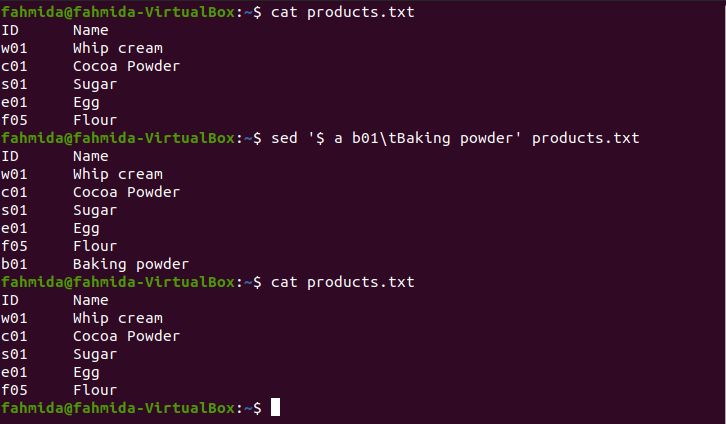
The expression m? matches either a single instance of m or nothing. In both the case emphasis is on previous character. ? - Matches zero or one occurence of the previous character.+ - Matches one or more occurences of the previous character.They are often used in place of the * to restrict the matching scope. The ERE set includes two special characters, + and ?. If your version of grep doexn't support this option, then use egrep without -E option. This set uses additional characters, like grep can be used with -E option. At any other location ( e.g a^b), it matches itself literally.Įxtended Regular Expressions ( ERE) and egrep -Įxtended Regular Expression ( ERE) make it possible to match dissimilar patterns with single expression. When placed outside it, and at the begining of the expression ( e.g ^3.), the pattern is matched at the begining of the line.

When placed at the begining of a character class ( e.g, it negates every character of the class. The caret ( ^) has triple role to play in aregualr expressions. The following regular expression indicates that the previous character can occur many times or not at all However its interpretetion is trickiest and totally different and has no resmblance with shell wild cards. The * ( aestrik ) refres to immediately precceding character. So, matches a single nonalphabetic chracter string. other than the ones grouped in the class are matched. When the character class begins with this character, all characterss. Regular expression use the ^ ( caret ) symbol to negate the character class, while the shell uses ! ( bang ). Also uppercase precceds lowercase in ASCII sequence. When you use a range, make sure that the character on the left of the hyphen has a lower ASCII value than the one on the right. The pattern matches a single alphanumeric character. We can also use ranges, both for alphabets and numerals. Ī single pattern has matched two similar strings, that's what regular expression are all about. This is something similar to shell's wild cards that we have seen in our previous chapter. Zero or more occurences of the previous characterĪ single character which is not a p,q or rĪ regular expression with character class allows you to specify the group of characters enclosed within a pair of rectangular brackets, in this case the match is performed for a single character in the group.

Lets see the Details about each subset in the following examples. The table below summarises the Character Subset of the Regular Expressions. Quoting ensures that the shell isn't able to interfere and interpret the metachracters in its own way. Regular Expressions are interpreted by the command not by the shell. We will exapnd the coverage of the BRE when we discuss sed . We will first start with minimal treatement of the BRE set and then take (ERE) in next section. grep supports basic regular expression (BRE) by default and extended regular expression (ERE) with _E option. POSIX identifies regular expressions as belonging to two categories - basic and extended . Some of these characters used by regular expressions are also meaningful to the shell. If an expression uses any of these characters ,it is termed a Regular Expression . This feature of UNIX/Linux is command base and it has nothing to do with shell. Like shell's wild card which match similar filenames with a single expression, grep uses and expression of a different type to match a group of similar patterns. In our emp.csv file we have seen name - Mangesh, mangesh which are two different strings, now if we want to locate all such patterns from a file then it is tedious to give the different patterns to grep command with -e option.

Mathces pattern with entire line ( doesn't match embeded pattern) Also used for matching expression begining with (-) hyphen. The table below shows the options used by grep. Lets now summarise the options that we have looked for grep command.


 0 kommentar(er)
0 kommentar(er)
